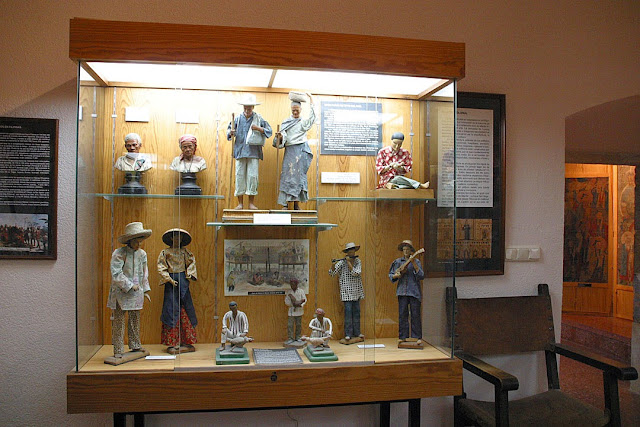[Photo: Street of Valladolid, Spain]
Wikipedia:
Valladolid (Spanish pronunciation: [baʎaðoˈlið]) is the capital
city of the Province of Valladolid and de facto capital of the autonomous
region of Castile and León in north-western Spain. It is situated at the
confluence of the Pisuerga and Esgueva rivers, and
located within three winegrowing regions: Ribera del Duero, Rueda and Cigales.
It has a population of 311,501 people, making it Spain's 13th most populous
municipality and northwestern Spain's biggest city. Its metropolitan area ranks
20th in Spain with a population of 413,605 people in 23 municipalities.
[Photo: Columbus monument]
TripAdvisor:
This is located just outside the train
station at the corner of Paseo de Filipinos. The sculptor of the statue of
Columbus was Antonio Susillo, of Seville. The statue of Columbus looks towards
the New World and is guided by the statue of Faith. Both statues are on top of
a globe, with a lion underneath the globe. These are flanked by four nude
statues of allegorical characters. The monument was going to be sent to Havana,
Cuba, for the 400th anniversary of the discovery of America at the end of the
19th century, but the Spanish American War of 1898 ended with Cuba getting its
independence. Spain decided to keep the monument for Valladolid, where Columbus
died.
[Photo: Museo Nacional de Escultura]
[Photo: Museo Nacional de Escultura]
Wikitravel:
Museo Nacional de Escultura: The best
cultural thing that Valladolid has is the polychrome wood museum (Museo de
Escultura). Some of the sculptures are used during the Easter holidays when
Valladolid becomes a famous city because of its religious traditions.
[Photo: Oriental Museum]
[Photo: Oriental Museum]
Wikimapia:
The Oriental Museum was founded in 1908 and after a second renovation
in 2005 was reopened to the public in May 2006. Its aim is to exhibit the large
collection of objects from China and the Philippines. They were collected by Augustinian
“Filipinos” in their missions in the Far East. This great collection of art is
found in this city for two reasons: Valladolid was the headquarters of the
Augustinian “Filipinos” in Spain and the second, being the headquarters, it was
where they trained the future missionaries who later on brought many artifacts
from the East.









